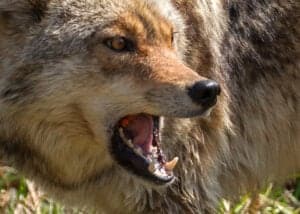If you think the coyote only lives in the depths of the wilderness, think again. In the past century, they have spread from their western range across the eastern and southeastern parts of the continent. In the past 30 years, coyotes in Georgia have spread from just 23 counties to all 159 counties in the state, as well as metro Atlanta. Today, they number about 250,000, which means clashes with people are inevitable. Georgia has liberal coyote hunting laws to prevent their numbers from increasing to unmanageable levels. This article is a basic introduction to the species, where you’re most likely to find them, and the state’s hunting rules.

Meet the Wiley Coyote
What the Cartoons Got Right and Wrong
In the old Looney Tunes animations, Wile E. Coyote always failed in his efforts to catch the speedy Roadrunner. In reality, roadrunners cannot outrun coyotes, who live up to their “wiley” reputation with cunning, speed, and guile. And they do it all without using a single stick of dynamite!
Coyote Size and Appearance
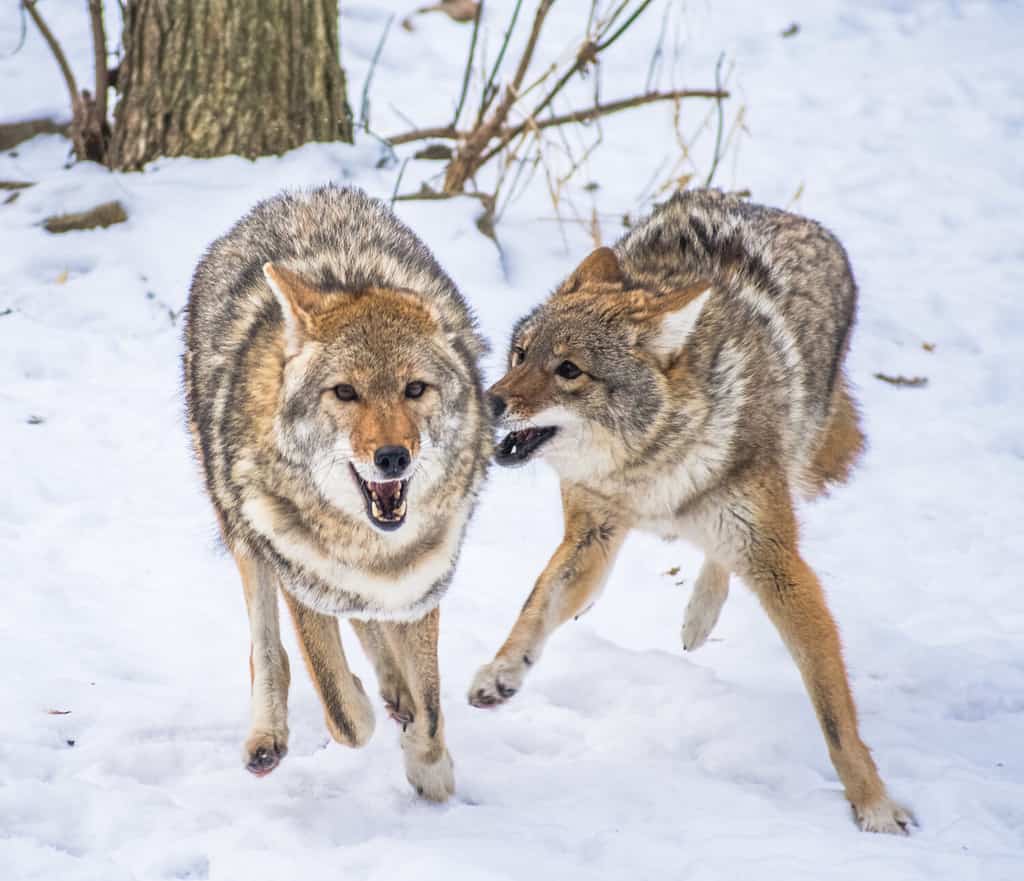
Coyotes look like wolves but are smaller. They’re comparable to medium-sized dogs.
©Dan J Rozak/Shutterstock.com
Coyotes are a member of the dog family. In fact, they can breed with dogs and the resulting offspring are called “coydogs.” Though coydogs may seem similar to domestic dogs, they have wild instincts and make unpredictable pets. Coyotes have a wolf-like appearance but are much smaller than wolves. They stand about 2 feet tall at the shoulder and weigh only 20-50 pounds. Including their tails, they are about 3.3-4.3 feet long. They have long coarse fur that is grizzled greyish brown on the back, and white underneath, with reddish legs, and a black tip at the end of a bushy tail.
Coyote Behavior

Nighttime howling is one of the coyote’s distinctive behaviors.
©Warren Metcalf/Shutterstock.com
Coyotes are omnivores, eating vegetables, oats, and fruits as well as fish and meat. They hunt their prey singly, in pairs, or in packs. They have excellent senses of vision, hearing, and smell and can run up to 40 miles an hour. A single coyote is able to bring down a much larger animal, like a deer, by biting it repeatedly to cripple it and inflict blood loss. It then goes for the throat to kill it. These animals are opportunists seeking out the easiest way to feed themselves, whether by eating carrion, catching small mammals or birds, rummaging through garbage, or eating dog food left outdoors by pet owners. They can be very noisy at night, yipping, barking, and howling like wolves. This can be more or less charming depending on your point of view: safely at home in your bed or sleeping in a tent in the woods!
Pros and Cons of Coyotes
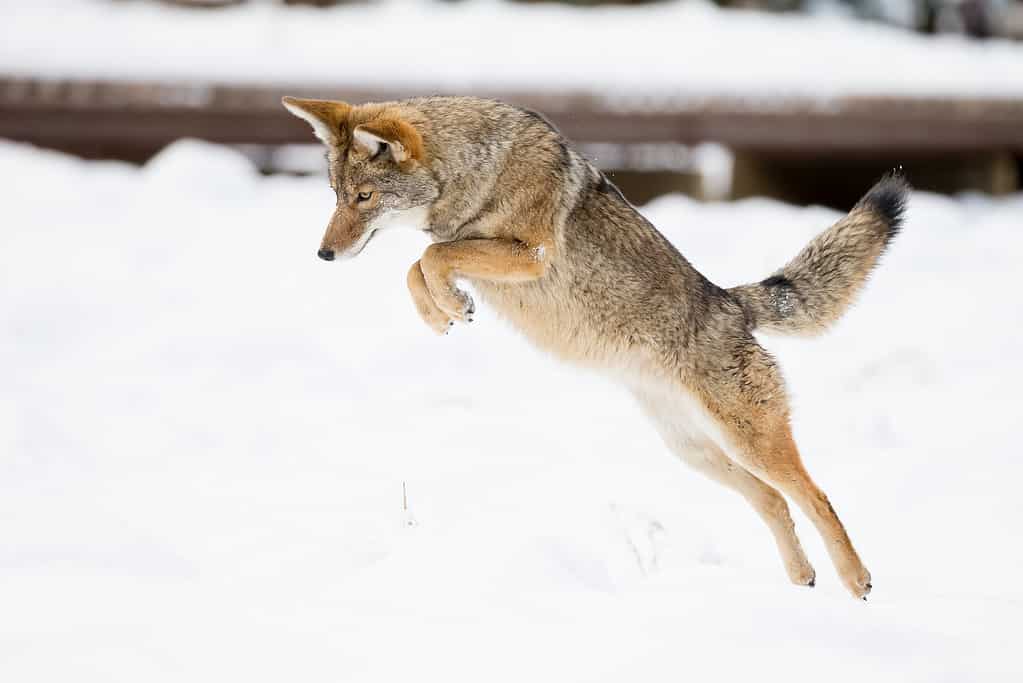
Coyotes perform useful ecological functions by hunting vermin and eating carrion.
©Keneva Photography/Shutterstock.com
Is it good to have coyotes roaming around populated areas? It depends.
Pros of Coyotes
- Coyotes help control the population of rabbits, squirrels, rats, mice, skunks, raccoons, and foxes. Some of these vermin species are very undesirable in populated areas. How many skunks would you like in your neighborhood?
- They also help control the feral cat population, which numbers over 70 million in the United States and does great damage to bird species. Cats are actually one of the most pervasive and damaging invasive species in the country.
- They shy away from people. Only rarely have they attacked children or adults. Of course, the few times one has done so it has made it in the news and tainted people’s perception of these animals.
- They clean up carrion. Anything that cleans up roadkill provides a useful service!
Cons of Coyotes
- If people feed coyotes or they become accustomed to raiding garbage cans, they can lose caution and fear and become bolder about approaching people. This can increase encounters with people who may behave in unsafe ways around them.
- They kill domestic cats and dogs, poultry, and livestock.
- They can carry disease and can spread it to domestic dogs.
- They can pose a hazard for cars on the road and aviation runways.
- Because coyotes eat fruits, oats, and vegetables, they damage gardens, although they also prey on animals that might be even more damaging to crops.
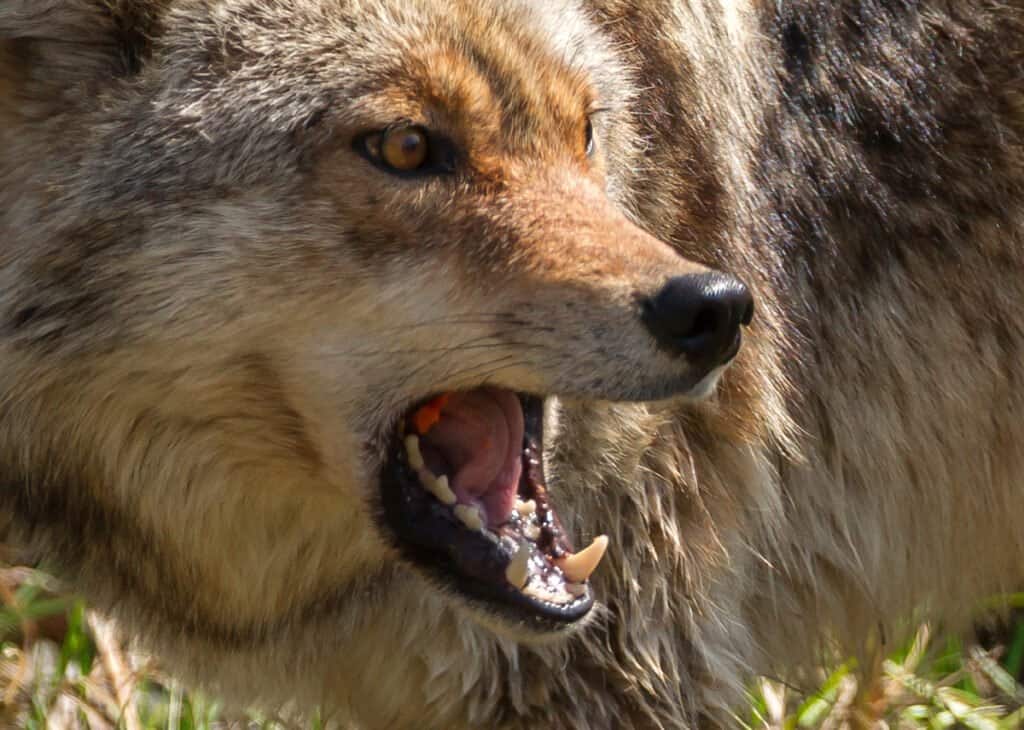
Coyotes carry disease and attack domestic livestock and pets.
©Derek R. Audette/Shutterstock.com
Why is it Ecologically Sound to Hunt Coyotes?
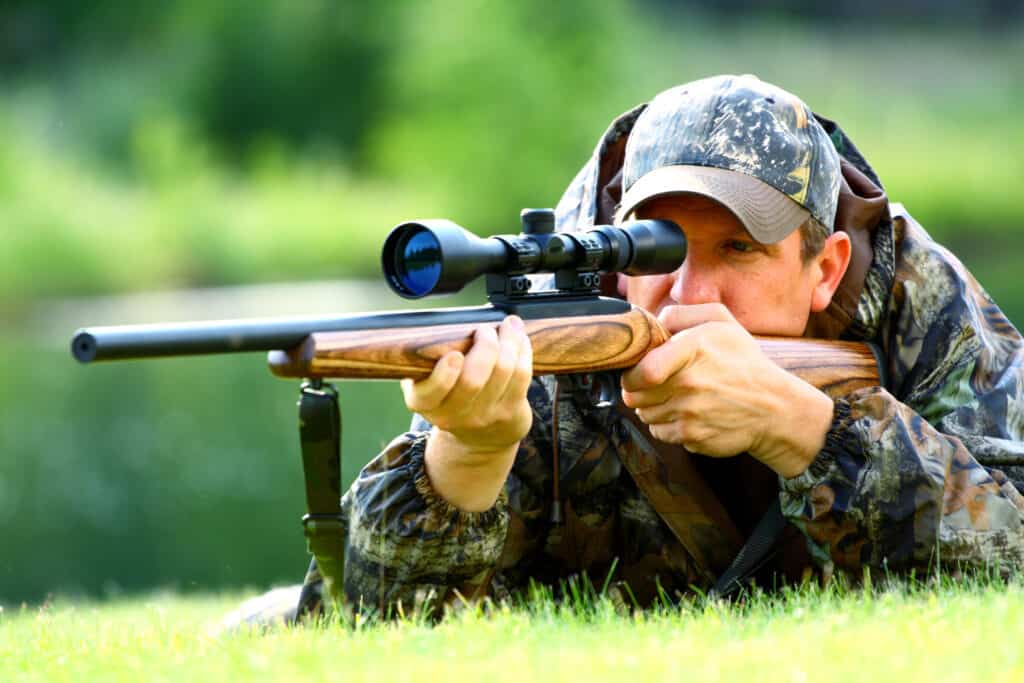
Hunting may seem cruel, but it can be part of a strategy to maintain a healthy ecological balance.
©timotheos/Shutterstock.com
Regardless of the pros and cons of coyotes, it’s important to control their population to prevent an ecological imbalance. With few large natural predators left on the continent to control their population, coyote populations would grow exponentially if they were not culled. This would reduce their prey species, leading to starvation and disease and making them increasingly bold about raiding human communities in search of food or even attacking humans opportunistically. Hunting can be one part of a strategy to keep their population manageable and healthy. Of course, this is not the only possible strategy. In fact, some studies show that coyotes breed more and have more puppies when they are heavily hunted. A combination of strategies, lethal and non-lethal, can help control the population.
Hunting Coyotes in Georgia

©Ajax9/Shutterstock.com
Rules for Hunting Coyotes
As coyotes are not endangered and are considered non-native to Georgia, the state has quite liberal hunting laws. There is no specific coyote-hunting season. On private land they can be hunted year-round with no bag limit, using firearms, archery, or traps. It is also permitted to use electronic calls. You can use a light of up to six volts to hunt them at night. On public lands there are more restrictions. For example, small-caliber arms must be used in certain seasons.
Residents 16 or older need a hunting license unless they are on their own land or that of an immediate family member. Nonresidents need a nonresident hunting license. You can apply for a license by phone, online, or at designated locations. If you were born after January 1, 1961, you must also complete a hunter education course before being granted a license.
Best Times and Places to Hunt Coyotes

Coyotes live in every county of Georgia, including metro Atlanta.
©Evilarry at English Wikipedia (Original text: David Selby), Public domain, via Wikimedia Commons – Original / License
Approximately 40,000 coyotes a year are killed in Georgia. Many of these are culled by deer or turkey hunters who shoot coyotes opportunistically, rather than hunters intentionally seeking them out. Some of the best places to find coyotes are near creeks and marshlands where prey is plentiful. The winter months are especially productive for hunting as coyotes are hungrier and more responsive to calls. They are nocturnal hunters, so dusk, night, and dawn are the best times to hunt them.
Coyotes live in all 159 counties of Georgia, including metro Atlanta. The state has over 100 tracts of public hunting land available for coyote hunting, including Wildlife Management Areas, national forests, and national wildlife refuges. Hunters report that the central Piedmont region of the state between the northern mountains and southern coastal plain is a particularly productive area for coyote hunting. Because of the extra restrictions on hunting in public lands, hunters often find it easier to make contact with a local farmer and hunt coyotes on private property.
Coyotes: Here to Stay
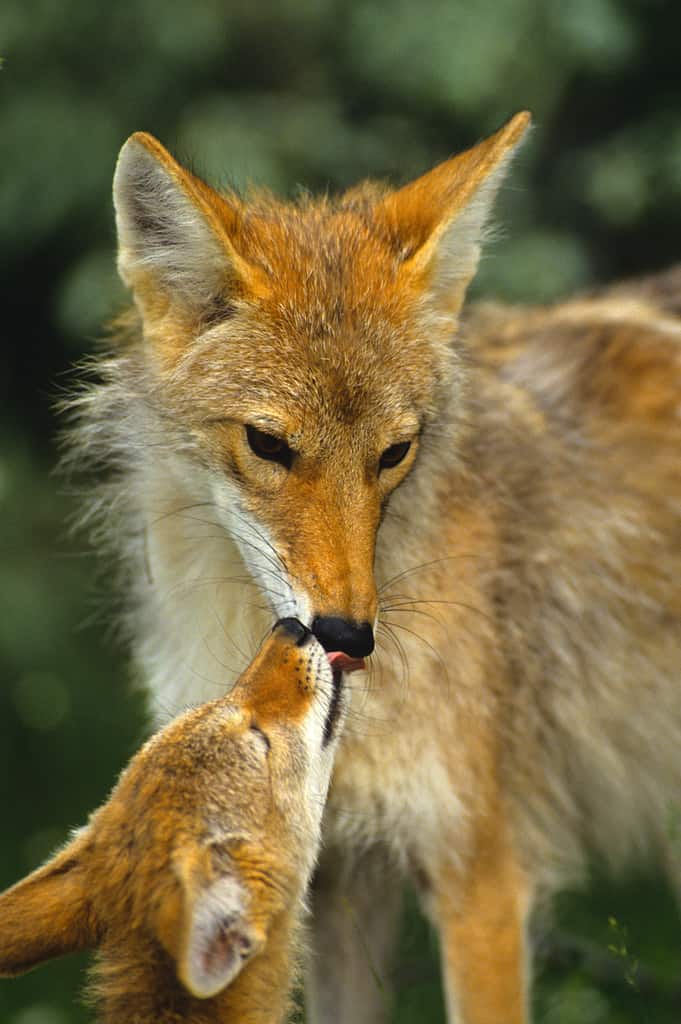
Despite their problematic side, it’s hard not to admire coyotes.
©Tom Tietz/iStock via Getty Images
In a world where so much wilderness is disappearing and so many species are endangered, animal success stories like that of the coyote can be encouraging. Suburban life can feel mind-numbingly artificial and dull. Spotting a coyote or hearing a pack yipping and howling at night can awaken primordial feelings of awe, excitement, and a little fear. At the same time, it’s clear that their numbers need to be controlled to prevent dangerous encounters between people and packs of hungry and possibly diseased carnivores. Fortunately, this resilient species thrives so successfully that even aggressive hunting does not endanger their survival. Coyotes are one species that is here to stay.
The photo featured at the top of this post is © Jim Cumming/Shutterstock.com
Thank you for reading! Have some feedback for us? Contact the AZ Animals editorial team.





